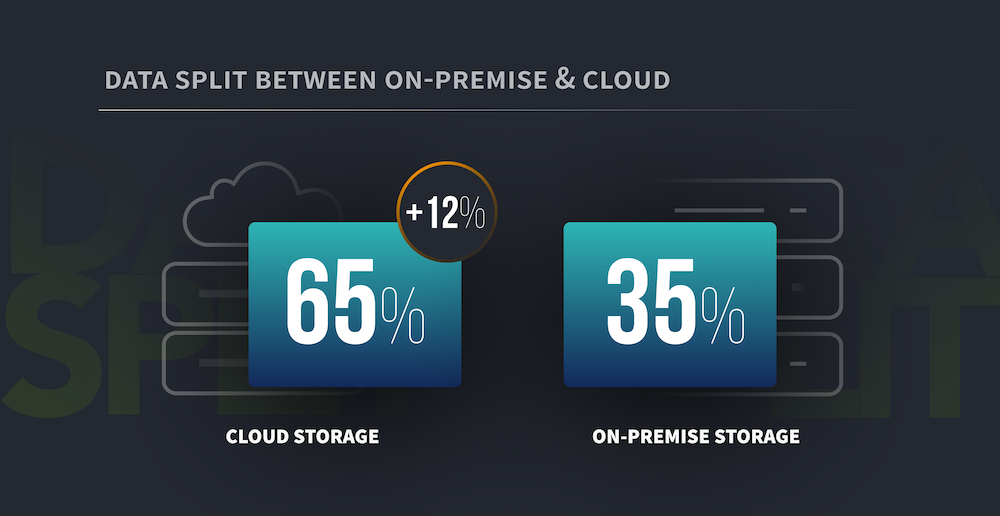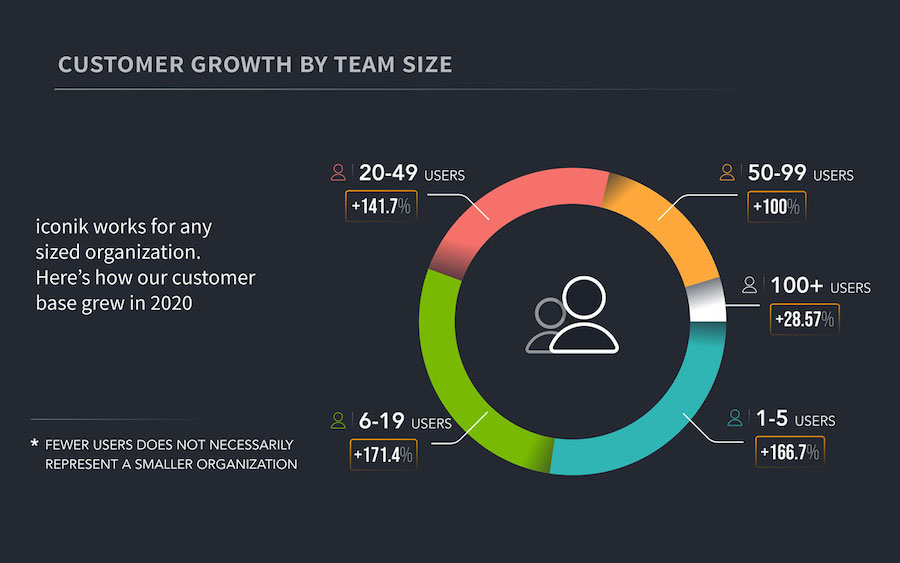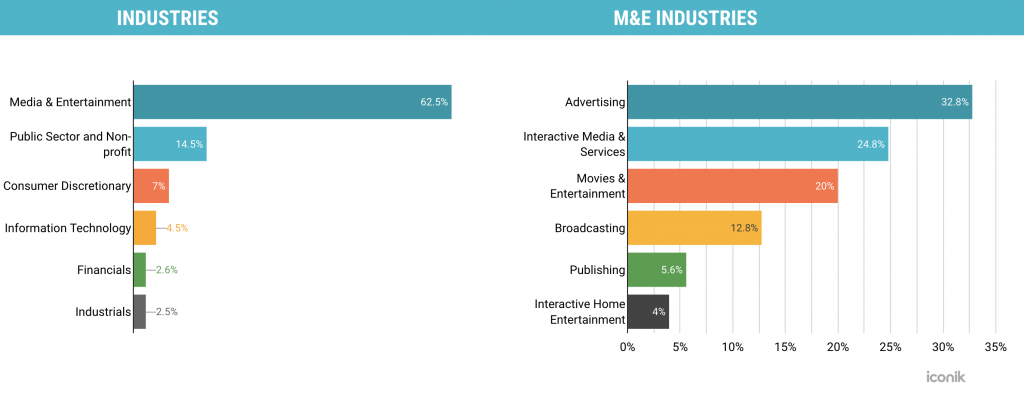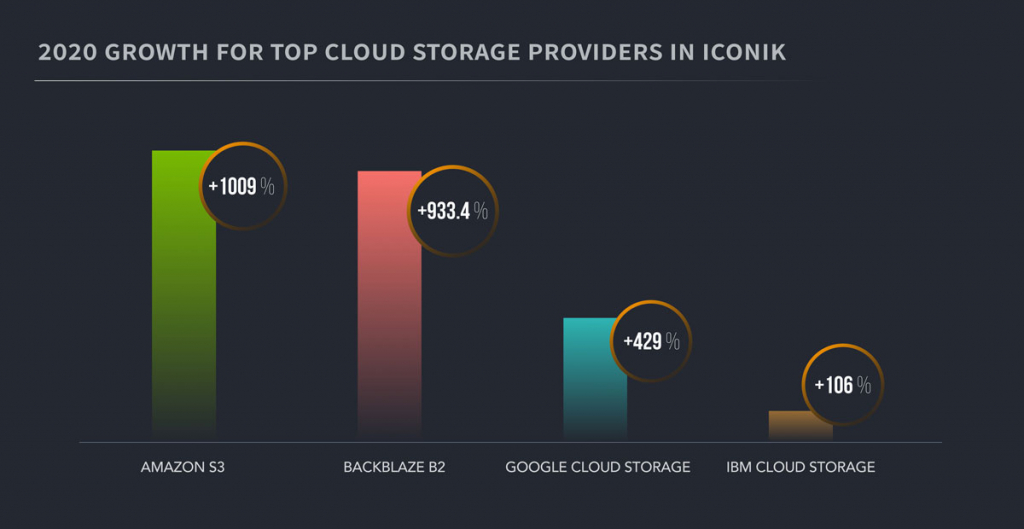![]()
The world looks a lot different than it did when we published our last Media Stats Takeaways, which covered iconik’s business intelligence report from the beginning of last year. It’s likely no big surprise that the use of media management tech has changed right along with other industries that saw massive disruption since the arrival of COVID-19. But iconik’s 2021 Media Stats Report digs deeper into the story, and the detail here is interesting. Short story? The shift to remote work drove an increase in cloud-based solutions for businesses using iconik for smart media management.
Always game to geek out over the numbers, we’re again sharing our top takeaways and highlighting key lessons we drew from the data.
Takeaway 1: Remote Collaboration Is Here to Stay
In 2020, iconik added 12.1PB of data to cloud storage—up 490%. Interestingly, while there was an 11.6% increase in cloud data year-over-year (from 53% cloud/47% on-premises in 2019, to 65% cloud/35% on-premises in 2020), it was down from a peak of 70%/30% mid-year. Does this represent a subtle pendulum swing back towards the office for some businesses and industries?
Either way, the shift to remote work likely changed the way data is handled for the long term no matter where teams are working. Tools like iconik help companies bridge on-premises and cloud storage, putting the focus on workflows and allowing companies to reap the benefits of both kinds of storage based on their needs—whether they need fast access to local shared storage, affordable scalability and collaboration in the cloud, or both.

Takeaway 2: Smaller Teams Took the Lead in Cloud Adoption
Teams of six to 19 people were iconik’s fastest growing segment in 2020 in terms of size, increasing 171% year-over-year. Small teams of one to five came in at a close second, growing 167%.
Adjusting to remote collaboration likely disrupted the inertia of on-premises process and culture in teams of this size, removing any lingering fear around adopting new technologies like iconik. Whether it was the shift to remote work or just increased comfort and familiarity with cloud-based solutions, this data seems to suggest smaller teams are capitalizing on the benefits of scalable solutions in the cloud.

Takeaway 3: Collaboration Happens When Collaborating Is Easy
iconik noted that many small teams of one to five people added users organically in 2020, graduating to the next tier of six to 19 users.
This kind of organic growth indicates small teams are adding users they may have hesitated to include with previous solutions whether due to cost, licensing, or complicated onboarding. Because iconik is delivered via an internet portal, there’s no upfront investment in software or a server to run it—teams just pay for the users and storage they need. They can start small and add or remove users as the team evolves, and they don’t pay for inactive users or unused storage.
We also believe efficient workflows are fueling new business, and small teams are happily adding headcount. Bigger picture, it shows that when adding team members is easy, teams are more likely to collaborate and share content in the production process.
Takeaway 4: Public Sector and Nonprofit Entities Are Massive Content Producers
Last year, we surmised that “every company is a media company.” This year showed the same to be true. Public/nonprofit was the second largest customer segment behind media and entertainment, comprising 14.5% of iconik’s customer base. The segment includes organizations like houses of worship (6.4%), colleges and universities (4%), and social advocacy nonprofits (3.4%).
With organizations generating more content from video to graphics to hundreds of thousands of images, wrangling that content and making it accessible has become ever more important. Today, budget-constrained organizations need the same capabilities of an ad agency or small film production studio. Fortunately, they can deploy solutions like iconik with cloud storage tapping into sophisticated workflow collaboration without investing in expensive hardware or dealing with complicated software licensing.

Takeaway 5: Customers Have the Benefit of Choice for Pairing Cloud Storage With iconik
In 2020, we shared a number of stories of customers adopting iconik with Backblaze B2 Cloud Storage with notable success. Complex Networks, for example, reduced asset retrieval delays by 100%. It seems like these stories did reflect a trend, as iconik flagged that data stored by Backblaze B2 grew by 933%, right behind AWS at 1009% and well ahead of Google Cloud Platform at 429%.
We’re happy to be in good company when it comes to serving the storage needs of iconik users who are faced with an abundance of choice for where to store the assets managed by iconik. And even happier to be part of the customer wins in implementing robust cloud-based solutions to solve production workflow issues.

2020 Was a Year
This year brought changes in almost every aspect of business and…well, life. iconik’s Media Stats Report confirmed some trends we all experienced over the past year as well as the benefits many companies are realizing by adopting cloud-based solutions, including:
- The prevalence of remote work and remote-friendly workflows.
- The adoption of cloud-based solutions by smaller teams.
- Growth among teams resulting from easy cloud collaboration.
- The emergence of sophisticated media capabilities in more traditional industries.
- The prevalence of choice among cloud storage providers.
As fellow data obsessives, we’re proud to call iconik a partner and curious to see what learnings we can gain from their continued reporting on media tech trends. Jump in the comments to let us know what conclusions you drew from the stats.




